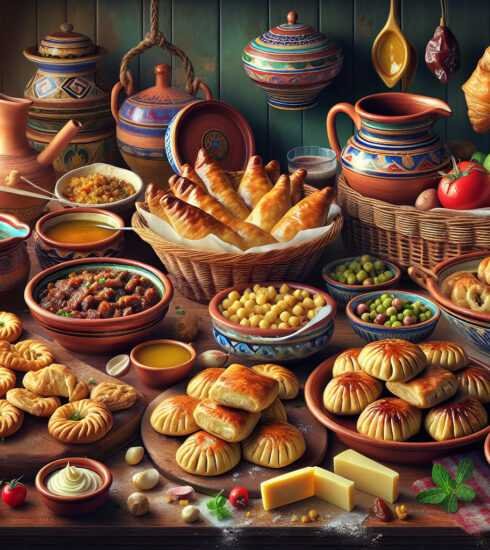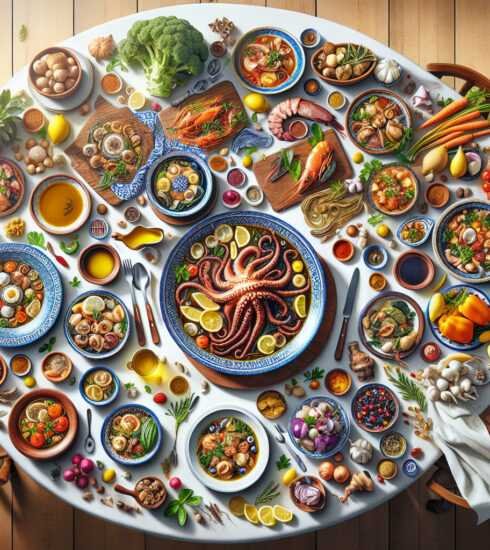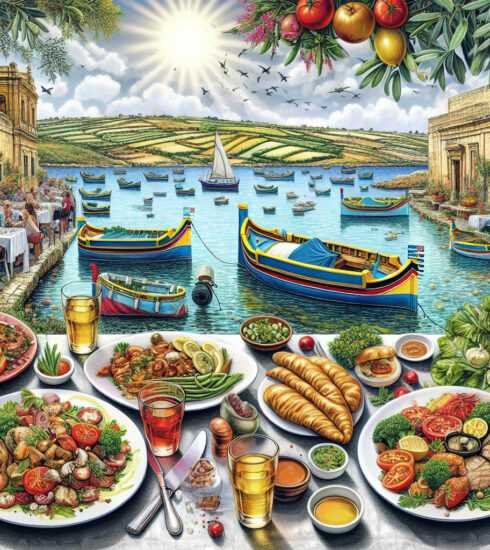Unveiling Maltas Culinary Delights: An In-Depth Article Exposing a Vibrant Cultural Fusion
Introduction
Malta, the picturesque archipelago nestled in the Mediterranean Sea, is known for its rich history, vibrant culture, and stunning landscapes. But did you know that Malta is also a hidden gem for food enthusiasts? Blessed with a unique culinary heritage shaped by centuries of cultural influences, Malta’s gastronomy is a true reflection of its fascinating past. This article will take you on a flavorful journey through Malta’s culinary kaleidoscope, exploring the diverse flavors, traditional dishes, and fusion cuisine that make Maltese food a delight for the senses.
The Historical Melting Pot of Maltese Cuisine
Maltese cuisine is deeply intertwined with the island’s history, which is marked by a succession of different rulers and influences. From the Phoenicians and Romans to the Byzantines, Arabs, Normans, and Knights of St. John, each civilization left its mark on the island’s culinary traditions. This rich cultural tapestry has resulted in a culinary fusion that is uniquely Maltese.
The Arab Influence
One of the most significant influences on Maltese cuisine comes from the Arab world. During the Arab rule in the 9th century, the island of Malta experienced an influx of Arab culture, including their culinary practices. The Arabs introduced a variety of ingredients and cooking techniques that continue to shape Maltese cuisine to this day.
Some of the Arabic flavors that have become deeply ingrained in Maltese cuisine include spices such as cinnamon, saffron, and cloves, as well as ingredients like almonds, honey, and dates. These ingredients are extensively used in desserts, giving Maltese sweets a distinctive Middle Eastern flair.
The Italian Connection
Close proximity to Italy has also had a significant impact on Maltese cuisine. The Italians, particularly the Sicilians, brought with them their love for fresh ingredients, rich flavors, and hearty dishes. Over the centuries, Maltese chefs have embraced elements of Italian cuisine, creating a unique fusion of flavors.
Italian influences can be seen in traditional Maltese dishes such as rabbit stew, known as “fenkata,” which resembles Italian braised rabbit. Pasta dishes like “timpana,” a baked pasta pie filled with meat and béchamel sauce, are also popular in Malta. The Italian influence is particularly evident in the way Maltese families gather around the table to enjoy long, leisurely meals, emphasizing the importance of food as a means of bringing people together.
British Influence and Beyond
The influence of the British colonial era, which lasted from 1800 to 1964, can also be seen in Maltese cuisine. The British introduced tea-drinking culture, jams, and chutneys, which have become part of the Maltese pantry. The English breakfast, complete with sausages, bacon, and beans, has also found its way into the Maltese culinary repertoire.
In recent years, Malta has experienced a modern culinary revolution, with chefs embracing international flavors and trends. This contemporary fusion cuisine takes inspiration from various culinary traditions, allowing visitors and locals alike to explore an exciting array of flavors.
Maltese Delicacies: A Gastronomic Exploration
Now that we’ve delved into the historical influences that have shaped Maltese cuisine, let’s embark on a culinary journey through some of Malta’s most iconic dishes and delicacies.
Traditional Maltese Platter
A key component of Maltese cuisine is the traditional Maltese platter, a colorful ensemble of local specialties that showcases the diversity of flavors and textures found on the island. The platter often includes:
- Gbejniet: These small, round cheeses made from sheep’s milk are an essential part of any Maltese platter. They can be enjoyed fresh, dried, or marinated.
- Bigilla: This traditional Maltese dip is made from mashed broad beans, garlic, olive oil, and herbs. It is typically served with crusty Maltese bread.
- Qarabaghli Mimli: Stuffed marrows are a popular part of the platter. The marrow is hollowed out and filled with a mixture of ground beef, breadcrumbs, onions, and herbs, then baked to perfection.
- Tarja: This is Malta’s version of the Sicilian caponata, a sweet and sour vegetable stew made with eggplant, tomatoes, capers, olives, and vinegar.
- Soppa Tal-Armla: This is a traditional Maltese soup made with seasonal vegetables, lentils, and pasta. It is a hearty and comforting dish, often enjoyed during the colder months.
- Maltese Sausages: Made from a combination of pork and beef, Maltese sausages are seasoned with garlic, coriander seeds, and other spices. They are usually grilled or pan-fried and served with crusty bread.
Fenek: The National Dish of Malta
Fenek, or rabbit, holds a special place in Maltese cuisine and is considered the national dish of Malta. This delicacy is prepared in various ways, but the most popular method is to stew it slowly with wine, garlic, onions, and fresh herbs. The result is a tender and flavorful rabbit dish that is both hearty and delicious.

The tradition of hunting and eating rabbit in Malta can be traced back to Phoenician and Roman times. Today, fenek is still widely enjoyed, and many local restaurants proudly feature it on their menus. It is often served with hand-cut fries and a side of mixed salad.
Pastizzi: Flaky Delights
When it comes to Maltese street food, pastizzi reign supreme. These delicious pastries are a staple of Maltese cuisine and can be found in almost every street corner bakery on the islands. Pastizzi are made with flaky pastry filled with either ricotta cheese or mushy peas.
Many Maltese people start their day with a pastizz, enjoying it as a quick breakfast option. The pastizzi are usually served piping hot, straight from the oven, and are best enjoyed with a cup of strong Maltese coffee. They are a must-try for any visitor looking to experience authentic Maltese flavors.
Maltese Wines and Beer
No culinary journey through Malta would be complete without exploring the island’s beverage offerings. Malta has a rich tradition of wine production, dating back thousands of years to the Phoenician era. The hot Mediterranean climate and fertile soil create ideal conditions for growing grapes, resulting in wines that are full-bodied and distinctive in flavor.
The two main indigenous grape varieties in Malta are Girgentina, a white grape, and Gellewza, a red grape. Maltese wines are known for their unique character and ability to complement local dishes, making them the perfect accompaniment to a traditional Maltese meal.
In addition to wine, Malta is also famous for its beer. Cisk, Malta’s national beer, is a favorite among locals and visitors alike. It is a refreshing lager that perfectly complements the Mediterranean climate.
Contemporary Culinary Experiences
While traditional Maltese cuisine is undeniably delicious, Malta has also embraced modern culinary trends, offering visitors a diverse range of dining experiences.
Fusion Cuisine
The contemporary culinary scene in Malta is characterized by fusion cuisine, blending traditional Maltese flavors with international influences. Many restaurants on the island offer innovative menus that combine Mediterranean, Middle Eastern, and European flavors to create unique and tantalizing dishes.
Farm-to-Table Experiences
Sustainable, locally sourced ingredients have become a focal point for many Maltese chefs. Farm-to-table experiences are gaining popularity, allowing visitors to taste the freshest and most authentic flavors Malta has to offer. From farm visits to cooking classes, these experiences provide a unique insight into Maltese agricultural practices and culinary traditions.
Seafood Delights
Given its location in the Mediterranean, it comes as no surprise that Malta offers an abundance of fresh seafood. From succulent grilled octopus to mouthwatering fish stews, seafood lovers are in for a treat in Malta. The island’s coastal restaurants are renowned for their seafood dishes, showcasing the best of what the Mediterranean has to offer.
Culinary Festivals and Events
Malta is home to a variety of culinary festivals and events that celebrate the vibrant food scene on the island. From the Malta Food Festival, where local chefs showcase their skills and creations, to wine festivals and beer tastings, there is always something exciting happening for food enthusiasts in Malta.
Conclusion
Malta’s culinary kaleidoscope offers a captivating blend of flavors, rooted in centuries of cultural fusion and historical influences. From traditional Maltese platters to fusion cuisine and contemporary dining experiences, there is something to please every palate in Malta.
Whether you’re savoring the rich flavors of fenek stew, indulging in a flaky pastizz, or enjoying a glass of Maltese wine, exploring the unique gastronomy of Malta is a truly delightful experience. So, embark on a culinary adventure and let Malta’s flavor-filled fusion enchant your taste buds.
References:





